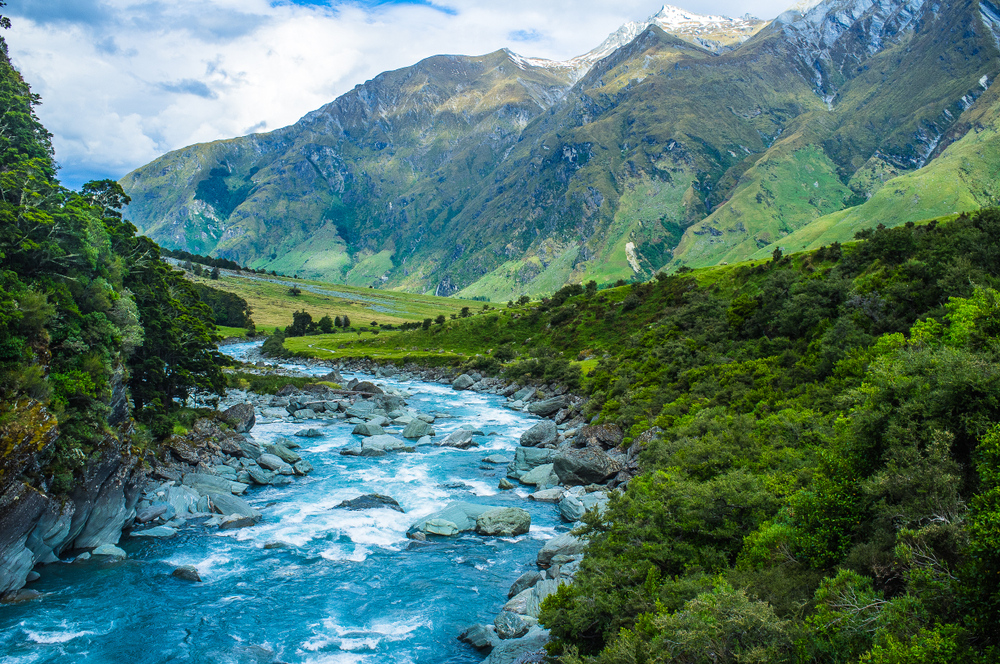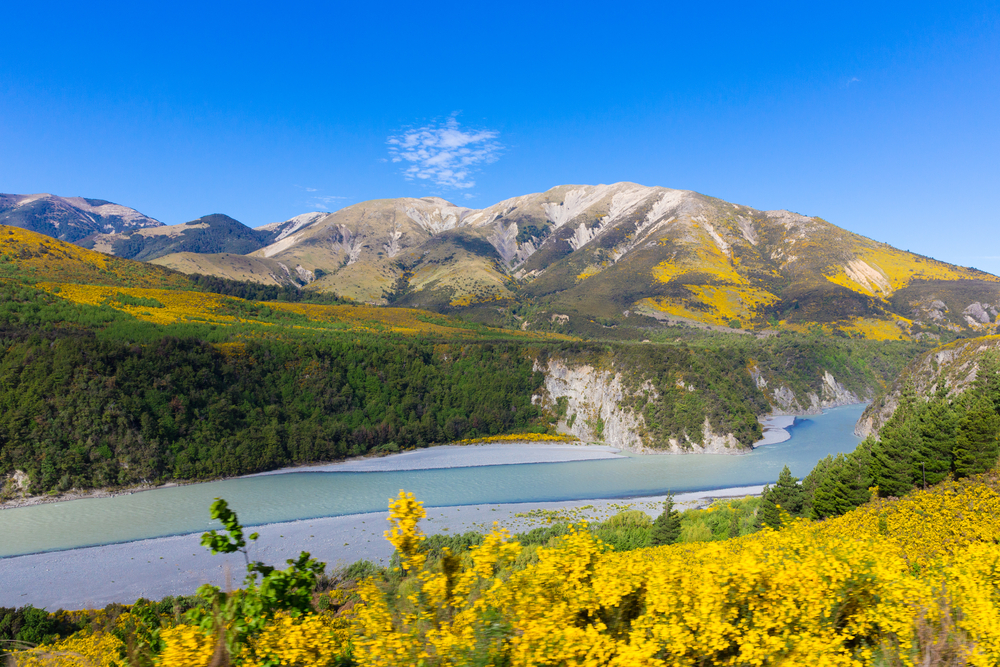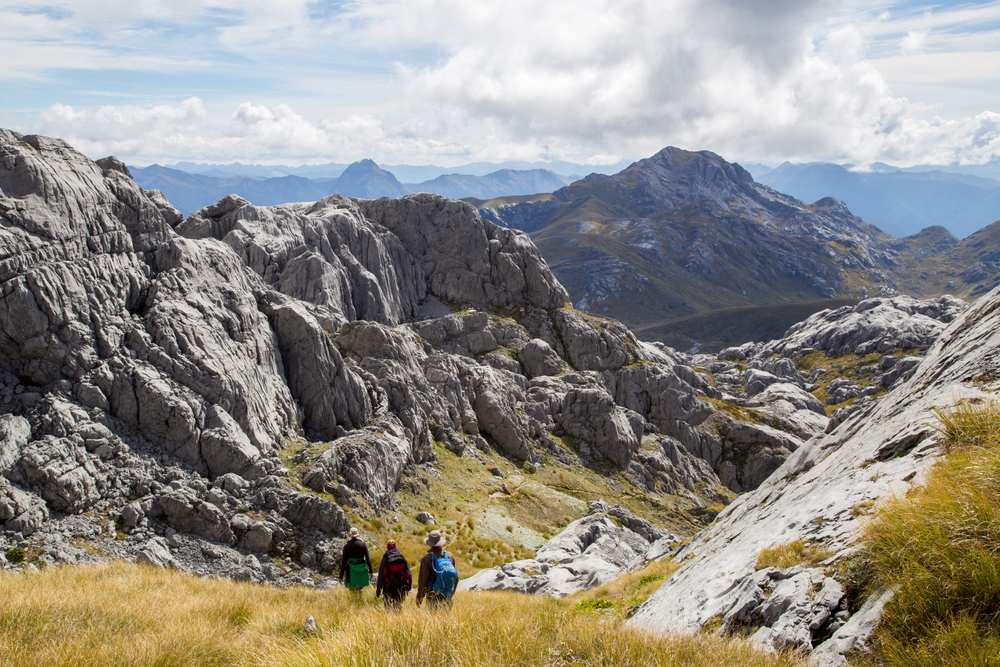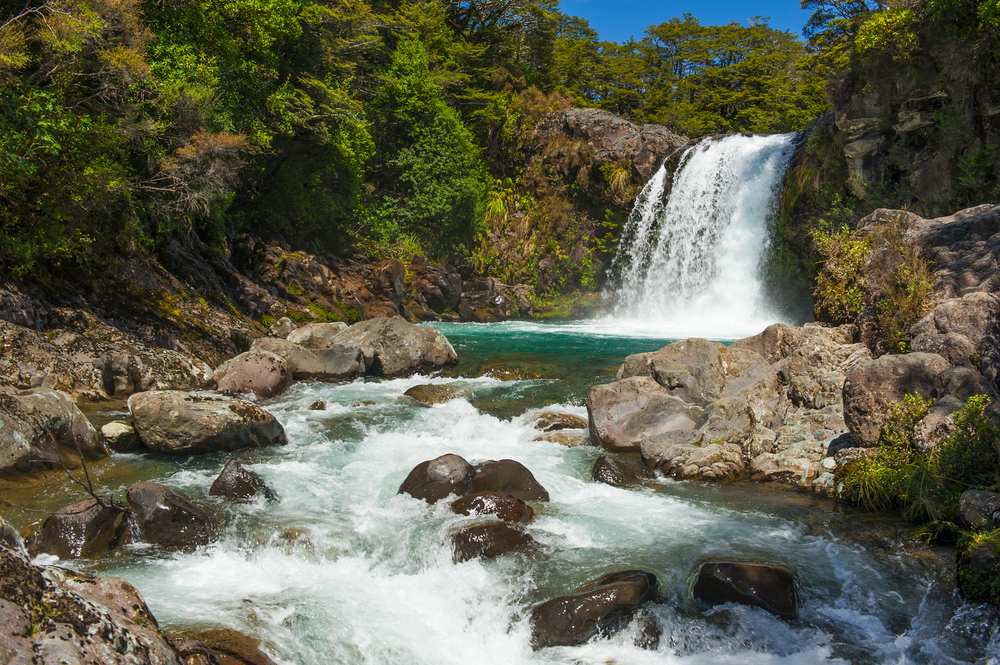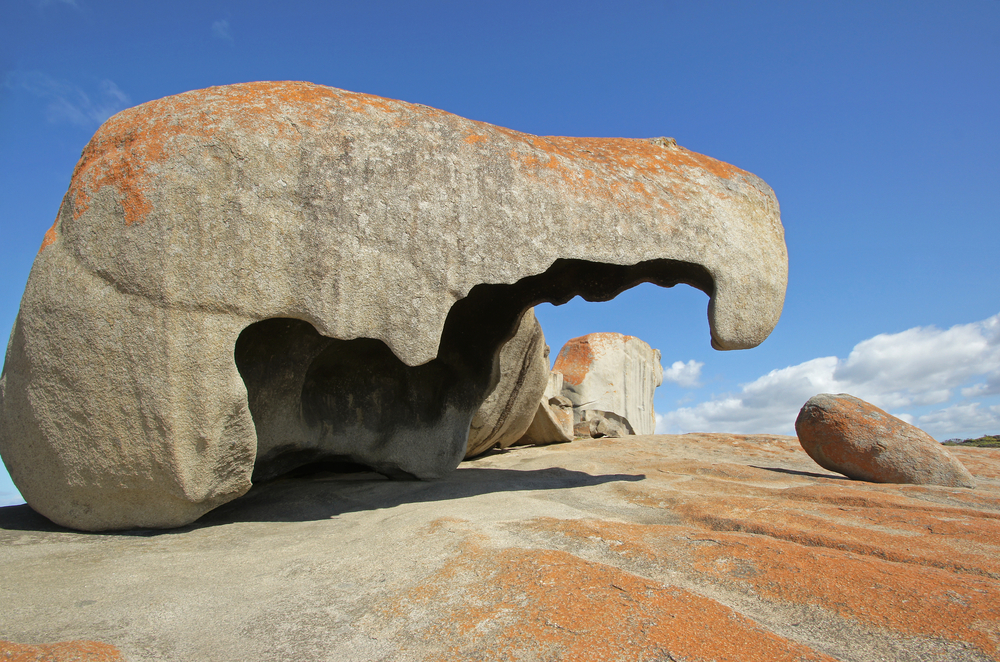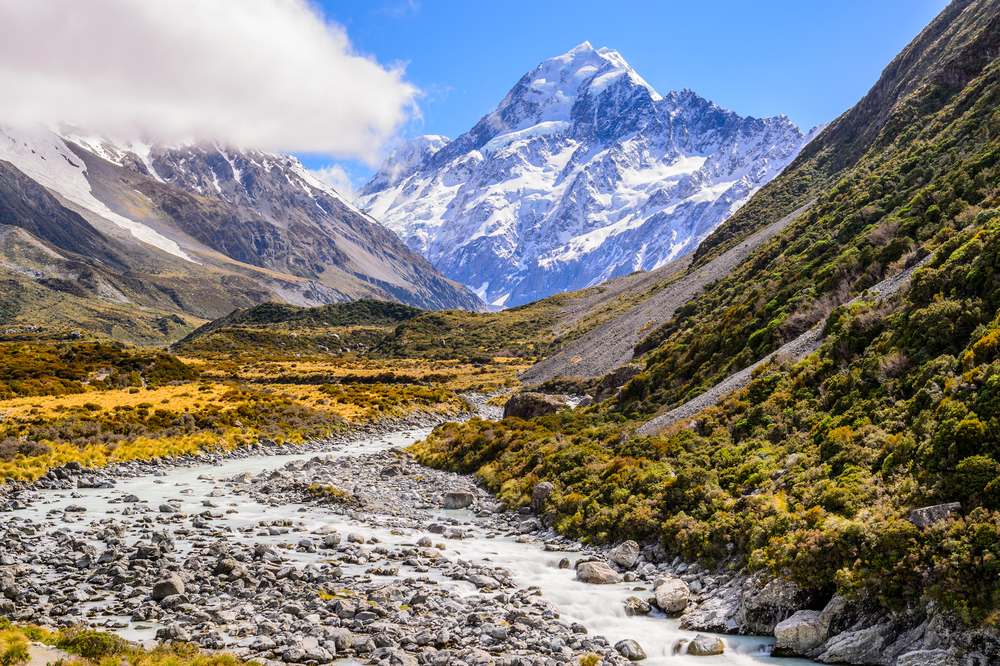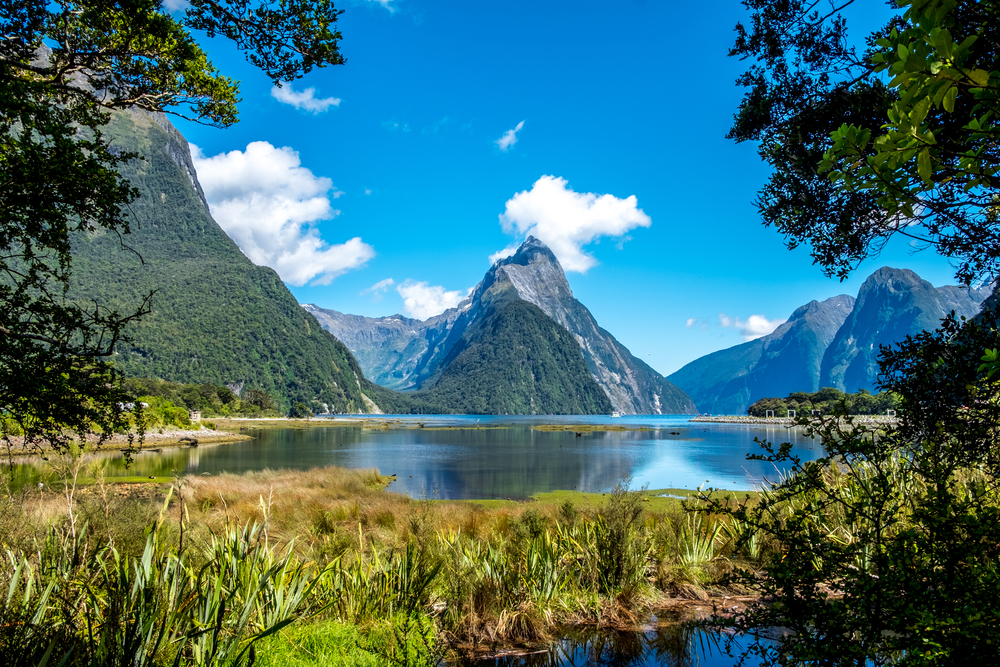Mount Aspiring Overview
Mount Aspiring National Park, known as Te Wāhipounamu in Māori, is a vast and rugged wilderness located in the South Island of New Zealand.
Covering approximately 1,373 square miles (3,555 square kilometers), this stunning expanse of protected land is part of the Te Wāhipounamu UNESCO World Heritage Area.
The park lies in the Southern Alps, northwest of the resort town of Wanaka, and stretches towards the remote west coast, encompassing towering peaks, deep valleys, and glacially carved landscapes that make it one of New Zealand’s most breathtaking national parks.
Dominated by the spectacular Mount Aspiring, which rises to 9,951 feet (3,033 meters), the park is characterized by jagged mountain ranges, sweeping river valleys, and dense beech forests. The Matukituki, Wilkin, and Dart River valleys cut through the region, creating dramatic scenery and providing access routes for hikers and climbers. Several glaciers, including the Bonar and Therma Glaciers, cling to the higher elevations, offering an awe-inspiring backdrop for visitors.
Waterfalls such as the Roaring Billy Falls and Thunder Creek Falls add to the park’s beauty, cascading down steep cliffs into pristine alpine rivers. The varied terrain supports a diverse range of plant life, with native species such as the mountain daisy, alpine buttercup, and the hardy tussock grasses thriving in the harsh conditions.
Mount Aspiring National Park is home to an incredible variety of wildlife, with both endemic and migratory species inhabiting its different ecosystems. The kea, an intelligent and mischievous alpine parrot, is one of the park’s most famous avian residents, while the more elusive rock wren can be spotted in higher elevations.
The native whio, or blue duck, thrives in the park’s fast-flowing rivers, and forested areas provide shelter for species such as the rifleman and the morepork owl. Mammals introduced to New Zealand, such as red deer and chamois, are commonly seen, while native species like the long-tailed bat remain more elusive. The park’s waterways are rich with eels and freshwater fish, while the alpine and subalpine zones serve as important habitats for insects like the endemic mountain wētā.
Visitors to Mount Aspiring National Park can explore its remote and untouched landscapes through an array of outdoor activities. Hiking is one of the most popular ways to experience the park, with world-renowned trails such as the Routeburn Track, Gillespie Pass Circuit, and the Rob Roy Glacier Track offering breathtaking views.
For more adventurous explorers, mountaineering and rock climbing opportunities abound, with Mount Aspiring itself being a sought-after peak for climbers. Jet boating and kayaking on the park’s rivers provide thrilling water-based experiences, while scenic flights allow visitors to take in the park’s grandeur from above.
Camping and backcountry huts provide accommodations for those wishing to immerse themselves in nature over multiple days.
As a protected area, Mount Aspiring National Park faces conservation challenges, including the impact of invasive species on native flora and fauna. The Department of Conservation actively works to control populations of introduced predators such as stoats and possums, which threaten native bird species.
Habitat restoration and species monitoring programs aim to ensure the survival of rare and endangered wildlife. Despite these challenges, the park remains one of New Zealand’s most pristine natural environments, with ongoing conservation efforts helping to preserve its wild beauty for future generations.








































































